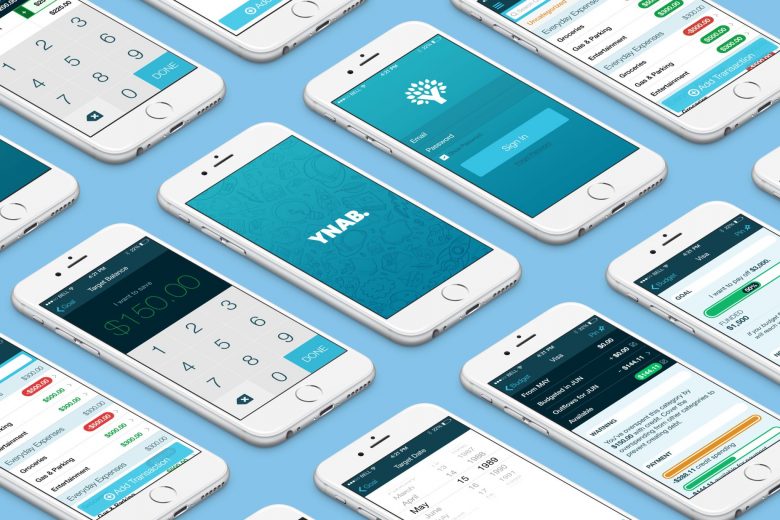

A few weeks ago, Michael and I were driving down California’s scenic Route Five on the way to our Las Vegas Babymoon, when I turned to him and jokingly said, “We made sure to budget enough money for me to really let loose at the slot machines, right?” Me: ?. Him: ?.
The joke is that two years ago this conversation wouldn’t have been a joke. It probably would have ended in a tense argument followed by lots of quiet time in the car. So the fact that we are able to make light of our money management speaks volumes to how far we’ve come since then, when the mere mention of a vacation, let alone how much we might spend on frivolous things like pulling a lever and watching $20 disappear, would send us (read: mostly me) into a tailspin of tears and anxiety and hurt feelings.
The how of getting to this point was a combination of couples therapy (seriously if you have any baggage around money, get thee to a counselor), and finally coming up with an actual system for managing our money—the latter with the help of the app You Need a Budget. Before switching to YNAB, our system for managing household finances was… not a system at all. It felt more like being inside one of those money wind machines where you’re frantically trying to grab as much as you can while fighting against the gusts. We knew roughly how much our expenses were each month, and we paid our bills (mostly) on time. But spending was always stressful because there was no plan. So each purchase came with a side of, “Can we really afford this?” And even though logistically we could, we kept putting ourselves through the emotional stress of feeling like we couldn’t. Cue: fights.

Here’s how we manage our money now:
Plan ahead, track as we go, Be Flexible: We dove right into the YNAB method. And the first rule of Fight Club YNAB is that every dollar gets a job. Loosely translated, that means that we budget all of our income each month into different categories, down to the last penny: rent, car payments, groceries, all the way to my Starbucks habit. If we’re tracking to have extra, we budget that money toward our savings goals.
If that sounds like a lot of work, it only is in the beginning. Once we got a working budget set up, it became a matter of making minor tweaks each month. Then, as we spend money throughout the month, we log expenses into YNAB to make sure our spending matches up with what we’ve budgeted for that category. If we accidentally go over (whoops, three vet appointments in three weeks), we pull from a different budget category to cover the cost (looks like we’ll be eating out a little less this month). The idea is that we’re never spending money without thinking about how it’ll affect our budget holistically. But also? Shit happens. And there needs to be enough flexibility for that to be okay. If you and your partner are stressed about money every month, I recommend checking out the YNAB method. It’s great for anyone who needs to add some structure to their household finances, but isn’t naturally good with money. It’s also only four bullet points, so we’re not talking thesis-level learning here.
Split the emotional labor: So the part about couples therapy? It turns out one of the reasons we were fighting about money all of the time was because I didn’t feel like I had any power over our budget. Michael’s the spreadsheets and numbers guy. I was just trying to keep up and not drive us into debt. Once we started using YNAB, we became co-owners of the budget. But here’s the thing. I already do a ton of emotional labor around our house. So I had no interest in adopting the work of managing our money too.
So we split it up like this: Michael and I make big decisions about our budget together. Do we want to save up to buy a new couch this year? Do we want to go on vacation? Do we need to be saving extra money so we can afford daycare? We each advocate for our wants and needs. (Though if I’m being honest? I’m usually driving a lot of the big picture purchasing decisions. Because if Michael had it his way, we’d still be using the futon he got from his mom when he went to college, and probably sleeping on an air mattress.) Then when it comes time to track and worry and move things around in the budget, that’s all him. And y’all? It’s ah-maz-ing. I get to be in charge, without having to do the heavy lifting. I would like all things to be this way, please and thank you.
Think six months ahead: Another problem we were having with our finances? We had great intentions about looking ahead to the future and zero follow through. But one of the rules of the YNAB method is to think ahead to the expenses you don’t see coming. So we’ve trained ourselves to always be looking six months ahead and making financial decisions for those expenses now. For example, Michael and I have four weddings to attend this year, and they are all across the country. So we created a line item in YNAB for 2017 weddings, and have started to build a budget reserve for things like plane tickets and bridesmaid dresses. Spoiler alert: My anxiety when it comes time to buy things like plane tickets has reduced by roughly 95 percent since implementing this change in our lives.
play the credit card game: What I have found most interesting about switching to our current system, is that it completely changed our relationship with credit cards. Where credit cards were how we got into trouble before (see: how we ended up with $30K worth of debt), now we use them as a tool in our financial management system. We got a few cards with really good points benefits (hello JetBlue) and put the majority of our purchases on them. Then we pay them off at the end of the month from our joint bank account. I would never have played this game before switching to a budgeting method, but since we’ve already accounted for those expenses, we don’t end up accruing any interest and our credit score is killing the game.
Leave room for fun: When Michael and I decided to finally get a handle on our finances, I was worried it wouldn’t leave any room for fun. But surprise: you can actually build fun into your household budget. (Why didn’t anyone tell me this before?) So now Michael and I have a line item in our budget each month for whatever the hell we want. I can buy all the leopard print maternity dresses my heart desires, and Michael can gorge himself on tiny Dungeons and Dragons figurines without having to hear about it from me.

It feels melodramatic to say out loud, but figuring out how to manage our money in a way that makes both Michael and me feel empowered has been one of the biggest accomplishments of our marriage thus far. And while sadly I did not win big in Vegas (blame my husband; I was up $60 at one point, but the man is an enabler), just getting there felt like hitting the jackpot.
but I want to know about you. how do you and your partner manage your household finances? Separate bank accounts? cash in envelopes? fly by night? do you feel like your current system is working for you?

This post was sponsored by You Need a Budget. YNAB is a powerful yet flexible tool for managing your finances. It has radically changed the way we approach our money, helped us get out of debt, and allowed us to prioritize our finances in a way we never could before. With the YNAB method, all of our regular and recurring expenses are budgeted in advance, so we’re able to see at a glance what kind of money we have for incidentals and make plans for a safety net. YNAB lets you manage your finances from your computer or your phone, plus they’ve synced up with over twelve thousand banks (including our tiny Maine credit union), making it easy to track real-time updates in your budget. Click here to learn more about YNAB and access your free 34-day trial.


